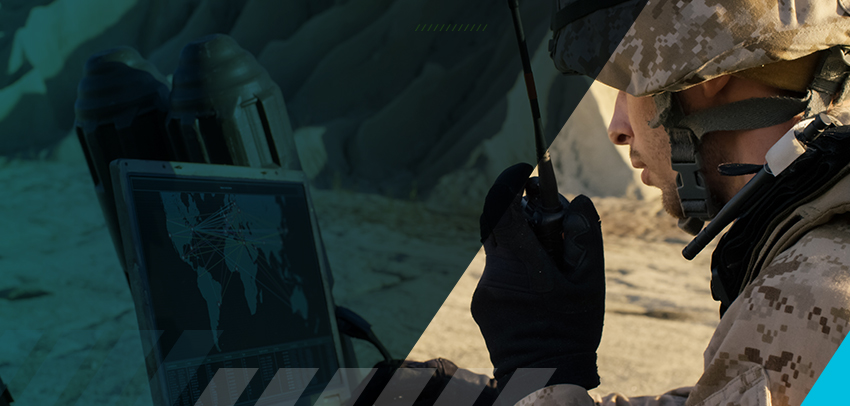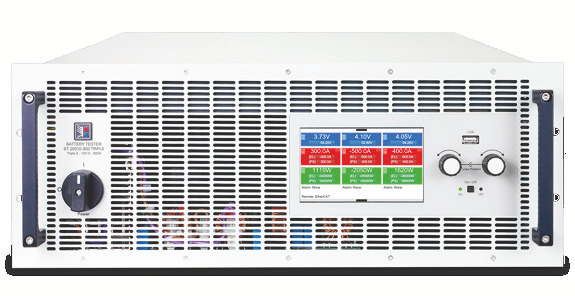Contactez-nous
Chat en direct avec un représentant Tek. Service disponible de 9 h à 17 h, CET jours ouvrables.
Appelez-nous au
Disponible de 9 h à 17 h CET jours ouvrables.
Télécharger
Télécharger des manuels, des fiches techniques, des logiciels, etc. :
Feedback
Innovative Test Tools Bust Through Roadblocks to High-Power Lead Acid Battery Manufacturing
A Specialized Battery Manufacturer
A battery manufacturer produces high-quality Group-31 batteries. Group-31 lead-acid batteries measure 13 in. (L) x 6.81 in. (W) x 0.44 in. (H). Capable of enduring rugged and harsh environments, group-31 batteries deliver high-power levels and can handle deep discharges and recharge efficiently.
Their primary market is the production of batteries for microgrids that power military communications systems. Their secondary markets include commercial trucking, cell-tower backups, marine applications, remote outposts, and solar and wind power collection. They are also growing their portfolio for aircraft and military-marine applications.
Instead of the traditional absorbent glass mat (AGM) approach to manufacturing, they employ a bi-polar approach, which enables higher power when necessary. At the heart of this approach is the company’s lead-infused glass fiber woven mesh, which makes its batteries more efficient, powerful, and less harmful to the environment. Their specialized battery uses 40% less lead than AGM batteries.
Expansion and Challenges
They are in the process of a major expansion. Moving into a new building, the company required equipment to support its new products and technological growth.
Achieving the company’s desired level of quantity, quality, speed and efficiency using traditional testers and batterysimulation tools presented numerous challenges, including:
- – Inability to test multiple units, thereby necessitating the use of many expensive, single standalone testers.
- – Insufficient output power to test the current specialized technology, as well as allow for growth.
- – A time-consuming process with possible production bottlenecks
- – Energy inefficient due to high operational heat; and
- – Large equipment, which would take up valuable floor space.
A Highly Efficient, Cost-Effective Solution
Through various trade contacts, the battery manufacturer’s President and CTO met with representatives from EA Elektro-Automatik (EA). EA’s representatives introduced them to the EA-BT 20000 series, a high-power, regenerativeefficiency battery tester. They suggested a 42U rack with seven triple-output BT 20360-80 units that provide 20 channels of battery formation and a 24U rack with three BT 20060-1000 triple-output units for high-current testing.
Triple-Output EA-BT 20360-80
The EA-BT 20000 series battery testers are the only such units on the market that offer triple output models and the highest power density.
The EA-BT 20360-80 offers three auto-ranging channels and can perform both as a charger and an electronic load (such as a discharger). Occupying a mere 4U rack space, the BT 20360-80 specifies an operating voltage from 0 V to 360 V, delivers up to 80 A of output current, and an output power of up to 1 kW per channel (± 30 kW maximum). This resolves three issues:
- – It eliminates the need for multiple single-channel testers (cost savings/production boosts).
- – It offers the high-power densities required by group-31 battery applications.
- – Provides a compact 4U footprint to free up lab space.
High-density power is a large benefit for manufacturers who are limited in space. For example, four BT20360-80s take up just one and a half times the space as one of the manufacturer’s single output systems.
Other benefits ofthe BT 20360-80 include:
- – The need for speed. Like all EA-BT 20000 series testers, the BT 20360-80 reads and processes commands with a transmission speed of 1 ms. Working with up-to-date versions of EtherCAT, CAN FD and Gbit Ethernet interfaces can boost throughput further, which translates into significant production gains.


- – Efficiency and sustainability. The BT 20360-80 is regenerative, an extremely important and attractive feature. In the discharging mode, it feeds energy back into the local grid with an efficiency of up to 96.5%.This leaves heat dissipation around 3.5%, significantly reducing air-conditioning and other utility bills.
- – Versatility. In addition to voltage and current measurement, the BT 20360-80 can handle a wider range of applications. These applications include simulating batteries as single cells, modules or packs, determining the state-of-health (SoH) for a second-life classification and end-of-life testing.
The Modular Advantage
In a follow-up meeting with the battery manufacturer, EA representatives discussed how EA’s modular approach enables:
- – Multiple testing options using the triplechannel BT 20360-80 and BT 20060-1000
- – Significant equipment savings and greater production output through multiple channels, higher power density and high-speed throughput
- – Significant utility and air-conditioning cost savings through regenerative efficiency
- – Frees up a significant amount of floor space
Higher Production with Significant Cost Savings
Based on EA’s initial proposal—a 42U rack with seven BT 20360-80 triples providing 20 channels of formation and a 24U rack with three BT 20060-1000 for high current testing—it became clear that they could form up to 20 batteries and test up to nine batteries simultaneously within far less space than the company’s existing equipment.
Using EA’s Elektro-Automatik ROI Calculator, the battery manufacturer could potentially realize a 98% reduction in power consumption and a total yearly power consumption savings of approximately $151,000.
Based on the projected boost in production and reduced utility and air-conditioning costs, the battery manufacturer decided to double the formation channels and move forward immediately. EA is set to deliver and commission the new systems by March 1, 2024, and provide comprehensive support afterward.




